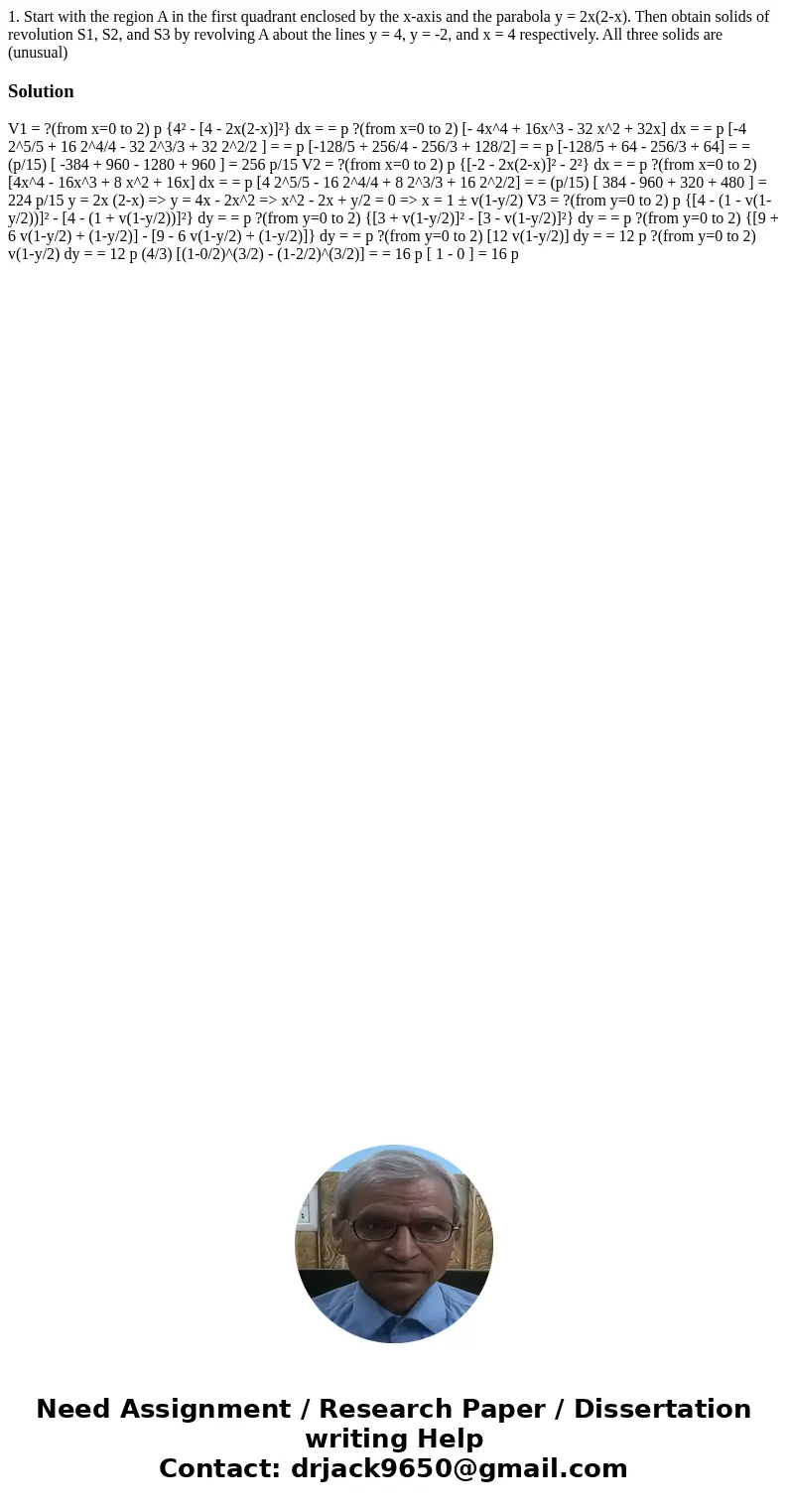1 Start with the region A in the first quadrant enclosed by
1. Start with the region A in the first quadrant enclosed by the x-axis and the parabola y = 2x(2-x). Then obtain solids of revolution S1, S2, and S3 by revolving A about the lines y = 4, y = -2, and x = 4 respectively. All three solids are (unusual)
Solution
V1 = ?(from x=0 to 2) p {4² - [4 - 2x(2-x)]²} dx = = p ?(from x=0 to 2) [- 4x^4 + 16x^3 - 32 x^2 + 32x] dx = = p [-4 2^5/5 + 16 2^4/4 - 32 2^3/3 + 32 2^2/2 ] = = p [-128/5 + 256/4 - 256/3 + 128/2] = = p [-128/5 + 64 - 256/3 + 64] = = (p/15) [ -384 + 960 - 1280 + 960 ] = 256 p/15 V2 = ?(from x=0 to 2) p {[-2 - 2x(2-x)]² - 2²} dx = = p ?(from x=0 to 2) [4x^4 - 16x^3 + 8 x^2 + 16x] dx = = p [4 2^5/5 - 16 2^4/4 + 8 2^3/3 + 16 2^2/2] = = (p/15) [ 384 - 960 + 320 + 480 ] = 224 p/15 y = 2x (2-x) => y = 4x - 2x^2 => x^2 - 2x + y/2 = 0 => x = 1 ± v(1-y/2) V3 = ?(from y=0 to 2) p {[4 - (1 - v(1-y/2))]² - [4 - (1 + v(1-y/2))]²} dy = = p ?(from y=0 to 2) {[3 + v(1-y/2)]² - [3 - v(1-y/2)]²} dy = = p ?(from y=0 to 2) {[9 + 6 v(1-y/2) + (1-y/2)] - [9 - 6 v(1-y/2) + (1-y/2)]} dy = = p ?(from y=0 to 2) [12 v(1-y/2)] dy = = 12 p ?(from y=0 to 2) v(1-y/2) dy = = 12 p (4/3) [(1-0/2)^(3/2) - (1-2/2)^(3/2)] = = 16 p [ 1 - 0 ] = 16 p
 Homework Sourse
Homework Sourse